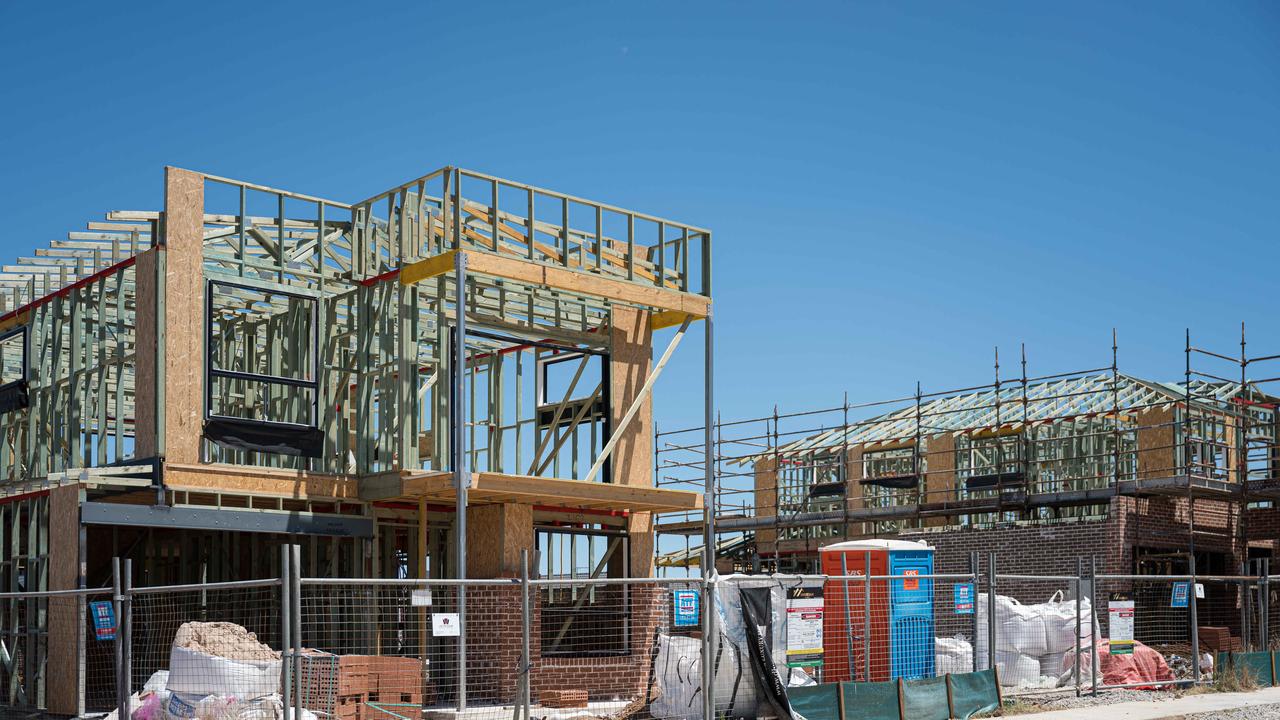Housing industry calls for an overhaul of the planning Act
A chorus of the state’s most prominent developers and architects have called for a complete overhaul to the state’s planning Act to fix the crippling housing crisis.
A chorus of the state’s most prominent developers and architects have called for a once-in-a-generation overhaul of the state’s 45-year-old planning Act to fix the housing crisis.
The biggest operators inside the state’s construction sector told The Daily Telegraph that a cumbersome piece of 1979 legislation was overwhelmingly the reason the state’s housing approval rates are still going backwards.
They say the Act – specifically the Environmental Planning and Assessment Act (EP&A Act) – allows each council to make its own rules and interpretations, slows the process down with multiple layers of consultation allowing NIMBYs to stall projects. It also requires dozens of reports and reassessments and before a project can get off the ground.
Changing the Act would give the government an opportunity to speed up approvals. Developers say it could turn unfeasible projects into profitable ones.

While the Minns government has implemented a number of planning reforms including a new housing taskforce and rezoning Transport Oriented Development Zones (TODs) using planning instruments outside the Act, the Premier has avoided any significant change to the core legislation, in part to avoid a political stoush.
Industry leaders have warned that those reforms only scratch the surface, with a bold overhaul to the EP&A Act required in order to tackle the state’s crippling housing crisis.
The founder of Drew Dickson Architects, Drew Dickson said the Act’s allowance of inconsistencies in regulation between councils areas greatly complicated the provision of homes.
“It makes it very difficult for more established areas to take their share of the redevelopment potential,” he said.
“In Ku-ring-gai if you want to subdivide a piece of land you need to have at least 920 square metres for each block but out at the new greenfield sites it can be 320 square metres or less.
“In the Act there should also be clear definitions for what is low, medium or high density and that applies everywhere so there is no ambiguity – if you see a site no matter where it is or how it is zoned you would know what you can get on it and what it is worth.”

Goodman Australia head of planning Guy Smith said other parts of the Act that needed to be overhauled was the Industrial Lands ‘retain and manage’. The amendment which was added to the EP&A in 2021, effectively placed a moratorium on industrial land being converted into housing stock.
“That policy that’s in place has totally scuppered the potential for that type of rezoning ,” Mr Smith said.
“It has been extremely problematic.”
Urban Taskforce chief executive Tom Forrest said parts of the Act which had been amended to require community consultation at every stage of a project’s assessment had become “an incubator for organised NIMBY groups”.
“The requirement for a community consultation plan, then the need to exhibit and re-exhibit every time any change was made meant organised objectors could milk the system to delay, frustrate and kill off housing development proposals,” he said.

The last government to attempt a serious overhaul of the EP&A was the O’Farrell Liberal government in 2013, but the legislation was torpedoed by the Labor opposition.
Deicorp corporate communications executive manager Robert Furolo said while a major overhaul of the Act was necessary it would require the NSW Liberals to work with the Labor government to get such visionary legislation over the line.
“It’s a serious long term bit of policy work and is going to require extensive consultations,” he said.
A spokesperson for Planning Minister Paul Scully did not commit to attempting to reform the EP&A but said the government “is always looking for and will consider great ideas to improve and streamline the planning system”.
More Coverage
Originally published as Housing industry calls for an overhaul of the planning Act





